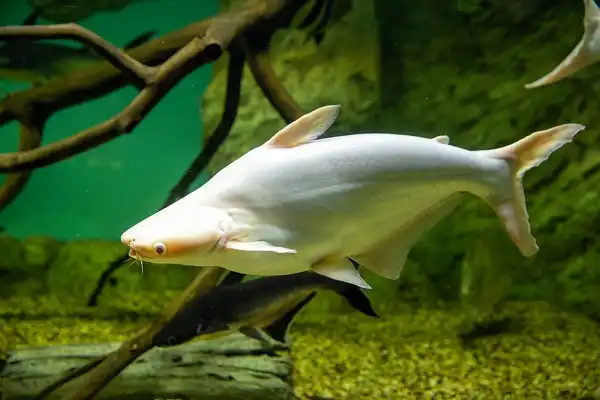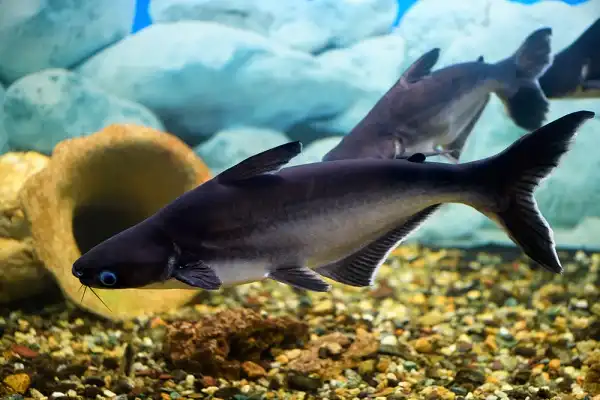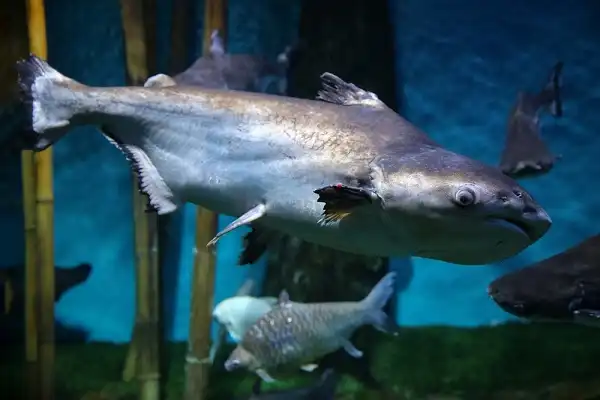Swai fish is a species of ray-finned fish whose scientific name is Pangasius bocourti. Found in the waters of Southeast Asia, swai fish has become increasingly popular due to its mild flavor and low price compared to other types of whitefish like tilapia or cod. It is also much more sustainable than some other commonly consumed seafood options, making it an attractive option for buyers looking for economically conscious choices that are still flavorful. With so many benefits associated with swai fish, it has really taken off as a food item – but what else can you learn about this fascinating creature? Keep reading to find out more!

Swai Fish Description
Swai fish, or Pangasius bocourti, is a freshwater fish species that is native to the Mekong Delta in Vietnam. Its body is elongated and cylindrical, with a flattened head and wide mouth. The scales on its body are small and covered in slime, giving it a smooth texture. In recent years, swai fish has become increasingly popular due to its affordability compared to other white fish. Additionally, it is much more environmentally sustainable than other commonly consumed seafood options, making it an attractive choice for conscientious consumers. The fish are harvested year-round, which helps to ease the pressure on wild fish populations.
Swai Fish Habitat
The swai fish is a freshwater species that can be found in the Mekong Delta region of Southeast Asia. This area is known for its abundant waterways, including the Mekong River, which is one of the largest rivers in the world. Swai fish are adapted to living in these freshwater environments and are able to thrive in a wide range of conditions. The fish prefer to live in slow-moving water that has a sandy, muddy bottom. They can also be found in lakes or ponds that have similar conditions. Swai fish are able to survive in water that has low levels of dissolved oxygen, which is an important adaptation for living in some of the more stagnant water bodies in the Mekong Delta region. In addition to freshwater habitats, swai fish can also be found in brackish water environments. These are areas where freshwater rivers meet saltwater seas, creating a unique ecosystem that supports a variety of species. Swai fish are able to tolerate the changing salinity levels in these environments and can be found at different depths within the water column.
Swai Fish Diet
Swai fish have a broad and adaptable diet, allowing them to thrive in a variety of environments. Their omnivorous feeding habits make them opportunistic eaters, consuming anything from insects and crustaceans to small fish. Insects are a significant part of the swai fish’s diet, with larvae and pupae being particularly important sources of nutrition. They also feed on small crustaceans such as crayfish, shrimp, and crabs. These food sources are abundant in the muddy bottoms of freshwater rivers and ponds where swai fish are commonly found. In addition to invertebrates, swai fish also consume small fish, including their own young. This cannibalistic behavior is not uncommon in fish species, especially those that live in densely populated environments. However, the majority of their diet is composed of non-predatory sources. Swai fish consume more plant materials than most other fish species, which contributes to their mild, slightly sweet flavor profile. They feed on aquatic plants such as algae, phytoplankton, and submerged vegetation. This is significant because swai fish have a lower fat content than many other seafood options, with only 4-6% of their body weight being fat.

Swai Fish Size
Swai fish, also known as iridescent shark, can grow up to 1.5 meters (5 feet) in length and weigh up to 40 kilograms (88 pounds). However, the size of swai fish depends on its habitat and farming conditions. In the wild, swai fish can take up to 6 years to reach full maturity, while farmed swai fish may reach maturity in as little as 1 year. As juveniles, swai fish grow quickly, with some reaching up to 45 centimeters (18 inches) in just 6 months.
Swai Fish Lifespan
Swai fish, also known as iridescent sharks, are native to Southeast Asia and are popular among fish farmers due to their adaptability and fast growth rates. Their lifespan varies depending on factors such as habitat, farming practices, and size. In the wild, swai fish can live up to 20 years, but on farms, their lifespan is often shorter due to intensive farming practices. Farmed swai fish are typically harvested after only 1-2 years, which limits their potential lifespan. It’s important to note that some farming operations do prioritize the well-being of the fish, providing them with adequate space, clean water, and good nutrition. In these cases, swai fish can live longer than those raised in poor conditions. The lifespan of swai fish is also influenced by their size. Larger swai fish have a higher chance of survival and longevity than smaller ones. This is because larger fish are better equipped to fend off predators and diseases.
Swai Fish Behavior
Swai fish, also known as iridescent sharks, are native to Southeast Asia and are known for their unique behavior. In the wild, swai fish are typically found in large schools and are highly adaptable to their changing environment. They are known to migrate upstream during the monsoon season and are often found in river systems and estuaries. While swai fish are known for their aggressive hunting behavior, they are generally peaceful towards other fish and do not display any territorial tendencies. They are social animals and often travel in large schools, communicating with one another through a series of sounds and visual cues. In the wild, swai fish are known to jump out of the water, a behavior known as breaching. This may be a form of communication or a technique used to dislodge parasites from their skin. In captivity, swai fish may exhibit different behaviors depending on their living conditions. Under poor or overcrowded circumstances, they may become stressed, leading to aggressive or abnormal behavior.

Swai Fish Speed
Swai fish, also known as iridescent sharks, are known for their remarkable swimming speed. Their speed is influenced by several factors, including their size, age, and environment. In the wild, swai fish have been observed swimming at speeds of up to 25 miles per hour, making them one of the fastest fish in their habitat. Swai fish are born with a remarkable ability to swim at high speeds, as they need to evade predators in their natural habitat. As they grow older and larger, their speed and agility increase, allowing them to cover longer distances and outpace potential predators. In captivity, swai fish can also swim at high speeds, provided they are kept in a suitable environment with enough space to move around. However, in overcrowded conditions or tanks that are too small for their size, they may not be able to swim at their full potential, which can affect their health and well-being.
Swai Fish Hunting
Swai fish are skilled hunters, with a number of adaptations that make them highly efficient at catching prey. Their sharp teeth and keen sense of smell enable them to locate and devour a wide variety of food, including smaller fish, insects, and crustaceans. While swai fish are known to be aggressive hunters, they are also highly adaptable and capable of changing their hunting strategies depending on the circumstances. For example, if their usual prey is scarce, they may switch to feeding on different types of food or adjust their hunting techniques to catch larger or more elusive prey. Another interesting aspect of swai fish hunting is their use of teamwork to catch larger prey. When hunting larger fish, swai fish may work together in groups to surround and attack their target. This coordinated hunting behavior requires a high degree of communication and cooperation among the members of the group.

Conclusion
Swai fish have highly adapted creatures with a remarkable ability to swim at high speeds and hunt efficiently for their prey. Their speed is influenced by several factors, including size, age, and environment, while their hunting strategies depend on the availability of food and the type of prey they are pursuing. Understanding the behaviors and adaptations of swai fish is essential for farmers and consumers looking to provide them with proper care in captivity, as well as for conservation efforts aimed at preserving their populations in the wild. With this knowledge, we can ensure that these amazing creatures thrive both in our homes and in their natural habitat.
Frequently Asked Question

